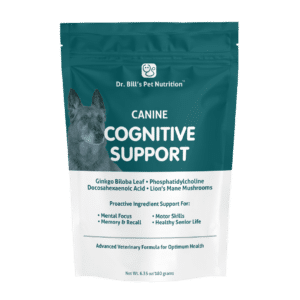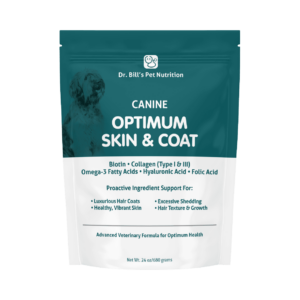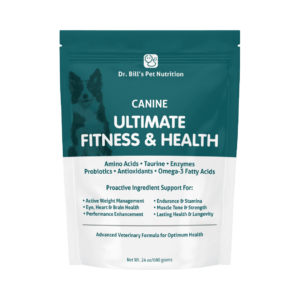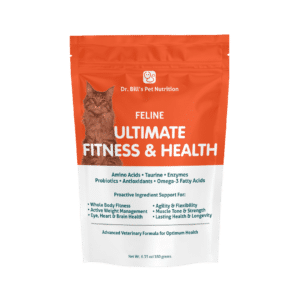
Vitamin B
Vitamin B1 (Thiamine)
Thiamin is a water-soluble vitamin that is not stored in appreciable amounts; thus, it must be constantly supplied in the daily diet or through supplementation. The highest concentrations of Vitamin B1 are found in muscle, heart, liver, kidneys and the brain. In food, thiamin can be found in free form as thiamine pyrophosphate (TPP) and as a protein phosphate complex.
Functions of Vitamin B1:
• As a coenzyme, B1 plays a key role in energy production
• Precursor of thiamin pyrophosphate (TPP) or co-carboxylase, a coenzyme required by dehydrogenase in the citric acid cycle (Krebs’ cycle) and by transketolase in the pentose phosphate shunt
• Affects all tissue especially nerve membranes, nerve conduction, the stomach and heart
Vitamin B2 (Riboflavin)
Vitamin B2 is involved in the production of red blood cells and antibodies. B2 is also involved in respiration, regulating growth and reproduction. Riboflavin is needed for energy metabolism, building tissue, and helps maintain good vision.
In addition to producing energy for the body, riboflavin works as an antioxidant, fighting damaging particles in the body known as free radicals. Free radicals can damage cells and DNA, and may contribute to the aging process as well as the development of a number of health conditions such as heart disease and cancer.
Functions of Vitamin B2:
• Component of two coenzymes, Flavin mononucleotide (FMN) and Flavin adenine dinucleotide (FAD) that are involved in dehydrogenase reactions and serve as electron carriers in all tissues
• FMN and FAD link the metabolism of carbohydrates, proteins and fats to the cytochrome system, the terminal oxidative pathway
• Antioxidant activity, derived from its role as a precursor to FAD, and as a cofactor in the production of glutathione and the reduction of glutathione peroxidase
• Desaturation of fatty acids
Vitamin B3 (Niacin)
Niacin is a water-soluble vitamin, stable under both acidic and alkali conditions and resistant to light and oxidation. Niacin is synonymous with nicotinic acid or nicotinamide. Both compounds have identical Vitamin activity and are absorbed from the stomach and small intestine.
Dogs are able to convert the amino acid Tryptophan into Niacin; however, cats cannot. Niacin promotes healthy skin and is needed for energy metabolism, proper digestion, and the maintenance of a healthy nervous system.
Functions of Niacin:
• Niacin is involved in a variety of biological processes such as:
o Energy production
o Regulation of gene expression
o Maintenance of genomic activity
o Biosynthesis of long-chain fatty acids, cholesterol and steroids
• Component of two coenzymes, nicotinamide adenine dinucleotide (NAD) and nicotinamide adenine dinucleotide phosphate (NADP), required by many dehydrogenases. They are reduced and act as electron carriers
• Important in the oxidative processes in all tissues
Vitamin B5 (Pantothenic Acid)
Pantothenic acid is a water-soluble vitamin that is present in all living cells. Vitamin B5 is primarily used in the production of coenzyme A (CoA) and the formation of the neurotransmitter acetylcholine.
Pantothenic acid is found in high concentrations in the liver and kidney and is important in synthesizing porphyrin, a precursor of heme needed in the production of hemoglobin.
The principle supplemental form of pantothenic acid is synthetically formed D-calcium Pantothenate. Up to 50% of natural Pantothenic acid is lost in food processing from heat.
Functions of Pantothenic acid:
• Component of Coenzyme-A (CoA), which is involved in the metabolism of fatty acids
• CoA is involved in many important biological reactions such as:
o Synthesis of acetylcholine
o Nerve impulse
o Synthesis of heme
o Synthesis of cholesterol
o Synthesis of steroids
• Involved in the citrate cycle
• Involved in the metabolism of fat and sugar to energy.
Vitamin B6 (Pyridoxine)
Vitamin B6 is the common term for three related compounds, pyridoxine, pyridoxal and pyridoxamine and their phosphorylated derivatives pyridoxine 5’ phosphate, pyridoxal 5’ phosphate and pyridoxamine 5’ phosphate. Pyridoxine, pyridoxine 5’ phosphate and pyridoxine glucosides are found in plant foods while pyridoxal 5’ phosphate and pyridoxamine 5’ phosphate are found in animal products.
Vitamin B6 is a water-soluble vitamin that is stable to heat and acid. However, oxidation or exposure to alkali or UV light will destroy it. As much as 50% of vitamin B6 is destroyed during cooking and processing.
Functions of Vitamin B6:
• Precursor of a coenzyme, pyridoxal phosphate (PDP), involved in the metabolism of amino acids and glycogen
• Synthesis of nucleic acids
• Synthesis and metabolism of hemoglobin
• Synthesis of sphingomyelin, sphingolipids and the neurotransmitters serotonin, dopamine, norepinephrine, histamine and gamma-aminobutyric acid a major inhibitory transmitter in the central nervous system
• Acts as a coenzyme for more than 100 enzymes
Pyridoxine assists in the growth of new cells and the functioning of the immune system. B6 is also credited with controlling moods, behavior and sex drive.
All the B vitamins (B complex) benefit the brain, but B-6 is especially important for regulating mood and preventing mental fatigue. This water-soluble vitamin is needed for the brain to produce serotonin, a feel-good neurotransmitter. Vitamin B-6 also helps the body make hemoglobin, the part of your blood that carries energy-boosting oxygen to the brain and other organs. Vitamin B-6 may also help improve memory.
Folic Acid (Folate or Pteroylglutamic acid)
Folic acid is a water-soluble vitamin commonly found in green, leafy vegetables that is readily destroyed by both air and heat.
Folate is generally used when referring to protein-bound or conjugated forms of folic acid found in food. Pteroylglutamic acid is the chemical compound commonly used as a Folic acid supplement.
Functions of Folic acid:
• Precursor of tetrahydrofolic acid (THF), a carrier of methyl groups in trans-methylation reactions
• Involved in the synthesis of DNA and RNA
• Synthesis of purines, guanine, adenine, thymine and pyrimidines
• Needed for DNA replication and repair, maintenance of the genome and regulation of gene expression
• Plays a role in the biosynthesis of heme and hemoglobin
• Essential for the formation and maturation of red and white blood cells from bone marrow stem cells
• Helps convert homocysteine to methionine, ethanolamine to choline, histidine to glutamic acid and serine to glycine
Vitamin B12 (cobalamin)
Vitamin B12 is a water-soluble vitamin and requires a protein (intrinsic factor) in the gastrointestinal tract for absorption. With advanced age, B12 absorption usually drops due to a lower acid-pepsin secretion by the gastric mucosa. Absorption of B12 can also decrease with deficiencies of iron or folic acid.
Vitamin B12 requirements usually increase during gestation. Storage of B12 is primarily in the liver and kidneys with excesses being excreted by way of the kidney and bile. Newborns with B12 deficiency fail to thrive, have poor brain growth and marked developmental regression.
Functions of Vitamin B12:
• Essential for normal metabolism in all cells especially the gastrointestinal tract, bone marrow and nervous system
• Protein, fat and carbohydrate metabolism
• Precursor of methylcobalamine involved in trans-methylations interacting with tetrahydrofolic acid (THF)
• B12, B6 and folic acid work together to provide methyl groups in biological pathways
• Synthesis of methionine and choline and reduction of homocysteine
• Conversion of methylmalonate to succinate
• Synthesis of deoxyribonucleic acid (DNA), purines and pyrimidine intermediates
• Erythropoiesis (red blood cell formation) interacting with THF
• Synthesis of Myelin (a neurotransmitter)
Benefits of Vitamin B12 Include:
• Development and function of the central nervous system
• Preventing irreversible neurological damage due to anemia
• Helping to boost memory and brain power
• Raising mood levels
• Preventing heart disease by reducing homocysteine levels
• Decreasing fatigue
• Promoting healthy metabolism and digestive system functions
Choline
Choline is widely found in free form or as a part of lecithin (phosphatidylcholine). Choline is synthesized in the body and is crucial for the normal function of all cells. It is a lipotropic B vitamin like compound that is easily absorbed from the intestine. Choline is able to cross the blood-brain barrier into the spinal fluid where it is involved in brain metabolism.
Functions of Choline:
• Important for the integrity of cell membranes, as a methyl donor, cholinergic neurotransmission and transmembrane signaling
• Is required for lipid transport and metabolism, exports fat from the liver and prevents fat accumulation in the liver
• Synthesis of acetylcholine in nerves, which plays a role in brain development and function
• Synthesis of phosphatidylcholine and sphingomyelin, structural components in cell membranes
• Synthesis of methionine and dimethylglycine
• A precursor of platelet-activating factor (PAF) and betain
NEW
Subscribe & Save
Save 10% On Auto Deliveries
Shop Now




